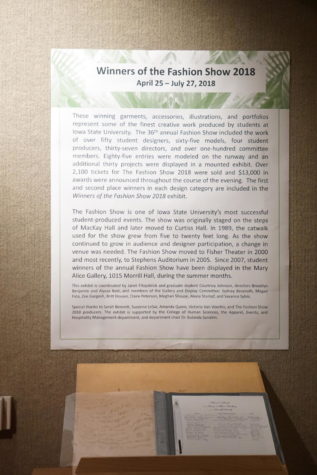Eating disorders affects numerous college athletes
March 2, 2015
College athletes are more prone to an eating disorder than the average college student and the affliction can impact their lives and mental health.
Depicting an athletic image is the concept that athletes have to look a certain way, whether that be muscular for football or slender for cross country. If an athlete does not match the image, it puts a lot of pressure on them to look the part. This not only leads to eating disorders, but can also lead to mental health issues.
This issue not only affects college athletes, but typical college students as well. For example, moving from high school to a college environment is a large transition for incoming students who may be living away from home for the first time in their lives. Many of these students are worried about gaining the freshman 15. Countless other students have a hard time finding the balance between eating healthy and working out. All of that pressure can spark an eating disorder.
This pressure to look a certain way impacts students and athletes differently. It can cause stress, anxiety and possibly cause the individual to develop an obsessive compulsive disorder due to the perceived need to become a perfectionist. If this goes on for long enough it can cause depression and even destructive behavior. This pressure can also be the origin of low self-esteem and other feelings of failure.
Body Image and Eating Disorder Awareness week hosted a lecture by Alison St. Germain, a clinician for Human Nutritional Sciences at ISU, explained that changing the paradigm of the athletic image would help with these issues.
St. Gemain recommends the 90/10 rule. A total of 90 percent of the food you eat needs to be healthy and respectable fuel for your body. The other 10 percent is food you want to eat and enjoy. Another tip she provided was to eat when you are hungry and stop when you’re full.
“All foods can fit, but try for less processed and more whole foods,” St. Germain said.
“Stop eating for external reasons,” St. Germain said. “Learn the difference between head hungry and stomach hungry.”
External reasons are reasons other than actually being hungry. A few examples of this could be those times when you see food and it looks good, it is a common time to eat such as lunchtime or eating simply because you are bored.
Another thing that will help with getting over the perceived athletic image issue is respecting and accepting your body. St. Germains’ lecture explained that being healthy is about fueling your body with food, not depriving it. “You don’t have to love your body to accept it,” St. Germain says, “but you should respect it enough to feed it well.”
“All foods can fit, but try for less processed and more whole foods,” St. Germain said.
















